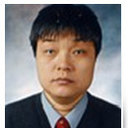DFT-based de novo QSAR of Phenoloxidase Inhibitors.
Maneno muhimu
Kikemikali
The phenoloxidase or tyrosinase is a key enzyme in insects, which is responsible for hydroxylation of tyrosine into o-quinones via o-diphenols. A series of benzaldehyde thiosemicarbazone, benzaldehyde and benzoic acid families were taken with their pragmatic pIC(50) values against phenoloxidase from pieris rapae (Lepidoptera) larvae. Density functional theory-based quantitative structure-activity relationship (QSAR) analyses were performed to speculate the key interaction. The most fitted four different QSAR models were identified and discussed. The softness, electrophilicity index, molar refractivity and log P were identified as best descriptors; however, the atomic values of softness and philicity obtained from Fukui function are more significant than global values. The study reveals that electrostatic and steric fields jointly contribute to activity. To gain further insight, the three-dimensional quantitative structure-activity relationship (3D-QSAR) analyses were performed using two molecular field techniques: comparative molecular field analysis (CoMFA) and comparative molecular similarity indices analysis (CoMSIA). The successful 3D-QSAR models were obtained from CoMFA (q(2)= 0.94, r(2)= 0.99, r(2)(pred)= 0.92) and CoMSIA (q(2)= 0.94, r(2)= 0.98, r(2)(pred)= 0/95). The CoMFA and CoMSIA results indicate that, a bulky and negative group around sulfur atom but a small and positive group around nitrogen atom might have good effects on activity. The ortho and meta positions of ring are favorable for small group. These QSAR models might be helpful to design the novel and potent inhibitors.


